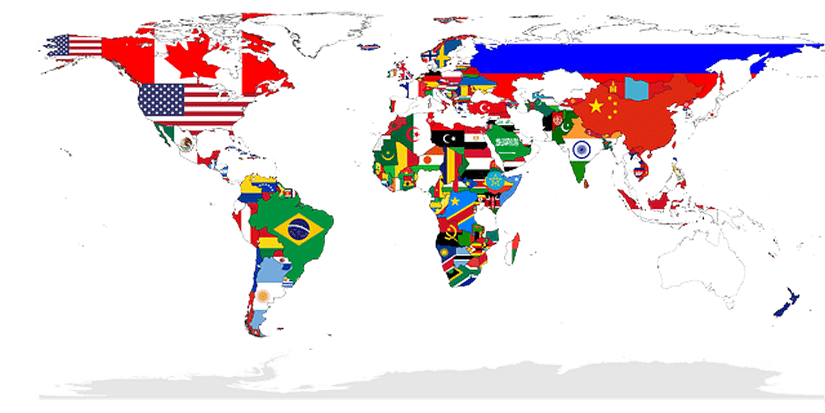By JustMarkets
At the end of the trading day, the Dow Jones Index (US30) was down 0.02%, while the S&P 500 Index (US500) added 0.14%. The NASDAQ Technology Index (US100) closed positive 0.32% yesterday. Tuesday afternoon saw the emergence of short positions amid comments from Atlanta Fed President Bostic, who said he sees one Fed rate cut this year but is willing to change his mind toward additional rate cuts if the economic picture changes. In addition, weakness in industrial stocks, insurance companies, and telecommunication companies harmed the overall market.
Today, the US will release its monthly consumer inflation report. This report will affect the likelihood of a rate cut by the US Federal Reserve in June. Economists expect core inflation, which excludes food and fuel costs, to slow to 3.7% year-over-year from 3.8% in the previous month. However, overall inflation may rise to 3.2% y/y from 3.4% y/y. If the data comes out in line with forecasts, it would mean a mixed report for the US Fed. A decline in the core indicator (excluding food and energy prices) would indicate a continuation of the overall disinflation trend, while a rise in the overall indicator would likely reflect higher oil prices over the past month. Any surprise in the form of continued inflationary pressures will support the US dollar, especially as FOMC policymakers again discussed the possibility of holding rates longer on the back of strong economic data. While economists had previously planned for 3 rate cuts by the US Fed this year, they are now planning for 1-2 total cuts. This will be a green light for the dollar, putting pressure on risk assets, indices, and partly gold. However, gold could rise even as the dollar rises, which is rare. If the data comes out below expectations (inflation will fall more than the market expects), it will increase the probability of a rate cut in June, which will put pressure on the US dollar and lead to the growth of risk assets (euro, pound, franc), as well as support stock indices.
Nvidia (NVDA) closed down more than 2% after Intel said it is bringing to market a new artificial intelligence chip called Gaudi 3. Intel CEO Gelsinger said it will be faster and more energy efficient than Nvidia’s H100 chip and will be priced “well below” the cost of current and future Nvidia chips.
The first quarter corporate earnings season kicks off this Friday with the release of results from major banks, including JPMorgan Chase (JPM), Citigroup (C), and Wells Fargo (WFC). The consensus expects S&P 500 companies to average 3.9% y/y earnings growth in Q1, the lowest year-over-year earnings growth rate since 2019.
The Bank of Canada (BoC) will meet today. Markets are pricing at a 15% chance of a rate cut, so the BoCis is unlikely to cut rates at this meeting due to concerns about wage-led inflation. However, the BoC may give clearer signals that a rate cut will happen this summer. Oil prices will also influence the Canadian dollar, with any escalation in the Middle East likely to benefit the oil-exporting currency.
Equity markets in Europe were mostly down on Tuesday. Germany’s DAX (DE40) fell by 1.32%, France’s CAC 40 (FR40) closed down 0.86% yesterday, Spain’s IBEX 35 (ES35) lost 0.88%, and the UK’s FTSE 100 (UK100) closed negative 0.11% on Tuesday.
In its quarterly bank lending review, the ECB reported that demand for corporate credit in the Eurozone fell significantly in the first quarter as the region continues to suffer from elevated borrowing costs.
WTI crude oil prices traded near $85 a barrel on Wednesday after falling for two consecutive sessions. A larger-than-expected increase in US crude inventories and ongoing diplomatic talks between Israel and Hamas helped ease supply concerns. API data showed US crude inventories rose 3.034 million barrels last week, exceeding forecasts for a 2.415 million barrel increase and reversing a 2.286 million barrel decline the previous week. In the Middle East, the Hamas movement said it would study Israel’s ceasefire proposal and present its response to mediators, raising hopes of averting a wider conflict in the region. However, Iran’s Revolutionary Guard warned it could disrupt trade through the Strait of Hormuz if necessary, which could hit a fifth of the world’s daily oil consumption.
Asian markets were mostly up yesterday. Japan’s Nikkei 225 (JP225) gained 1.08% yesterday, China’s FTSE China A50 (CHA50) was down 0.38%, Hong Kong’s Hang Seng (HK50) was up 0.57% over yesterday, and Australia’s ASX 200 (AU200) was positive 0.45%.
The Reserve Bank of New Zealand (RBNZ) kept the official cash rate (OCR) at 5.5% at the April 2024 policy meeting, extending the rate pause for the sixth time and confirming market expectations. Policymakers noted that the current stance of monetary policy is appropriate to further reduce pressure on manufacturing capacity and inflation. Although core domestic inflation slowed to a two-and-a-half-year low of 4.7% in Q4 2023, it remained well above the 1-3% target. The Committee believes the OCR should remain at a restrictive level for an extended period to help annual consumer inflation return to the target range.
Bank of Japan data showed that producer prices in Japan rose by 0.8% year-on-year in March 2024, matching expectations and the highest since last October.
S&P 500 (US500) 5,209.91 +7.52 (+0.14%)
Dow Jones (US30) 38,883.67 −9.13 (−0.023%)
DAX (DE40) 18,076.69 -242.28 (−1.32%)
FTSE 100 (UK100) 7,934.79 −8.68 (−0.11%)
USD Index 104.11 −0.03 (−0.03%)
- – Japan Producer Price Index (m/m) at 02:50 (GMT+3);
- – New Zealand RBNZ Interest Rate Decision at 05:00 (GMT+3);
- – New Zealand RBNZ Rate Statement at 05:00 (GMT+3);
- – US Consumer Price Index (m/m) at 15:30 (GMT+3);
- – Canada BoC Interest Rate Decision at 16:45 (GMT+3);
- – Canada BoC Monetary Policy Report at 16:45 (GMT+3);
- – Canada BoC Press Conference at 17:30 (GMT+3);
- – US Crude Oil Reserves (w/w) at 17:30 (GMT+3);
- – US FOMC Meeting Minutes at 21:00 (GMT+3).
By JustMarkets
This article reflects a personal opinion and should not be interpreted as an investment advice, and/or offer, and/or a persistent request for carrying out financial transactions, and/or a guarantee, and/or a forecast of future events.









